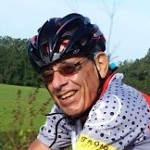
High blood pressure puts you at increased risk for suffering a heart attack or stroke and damaging every organ in your body. Lowering high blood pressure helps to protect you from these complications (JAMA, 1970;213:1143-52). Blood pressure is at its lowest at bedtime. Your blood pressure is too high if it is:
• above 120/80 when you are lying in bed before you go to sleep at night or before you get up in the morning, or
• above 140/100 at other times.
Research more than 60 years ago showed that regular exercise helps to protect you from heart disease and premature death (Lancet, 1953;2:1111-20), and the more regularly you exercise, the greater the protection (N Engl J Med, 1984;311:874-7). Regular exercisers have significantly lower blood pressures than non-exercisers (Am J Hypertens, 1989;2:60), and those who do not exercise regularly are at much higher risk for developing high blood pressure in the future (JAMA, 1984;252:487-90).
Blood Pressure During Exercise
Your blood pressure usually rises as soon as you start to exercise and drops a little bit while you exercise at the same intensity (J Appl Physiol, 1997;82(4):1237 – 1243). However, as you continue to increase the intensity of exercise, your blood pressure usually rises higher and higher. When you run at a comfortable pace, your blood pressure can normally be 200/70. When you do a maximum-effort leg press, your blood pressure can rise as high as 480/350.
Blood Pressure Drops After you Stop Exercising
For people both with and without high blood pressure, a single exercise session lowers blood pressure for up to an hour after you finish exercising and then blood pressure returns to its previous level (Hypertension1991;18:211-215). Having a systolic blood pressure that does not drop after you stop exercising puts you at increased risk for heart disease (Am Fam Physician, Oct 1, 1998;58(5):1126-1130). Doctors use a ratio of systolic blood pressure three minutes into the recovery phase of a treadmill exercise test divided by systolic blood pressure at peak exercise. A ratio above 0.9 means that you are at increased risk.
Points to Remember
• High blood pressure puts you at increased risk for heart disease.
• Exercise helps to lower high blood pressure and prevent heart disease.
• Blood pressure generally rises after you start to exercise and drops when you stop exercising.
• After stopping exercise, blood pressure drops to its pre-exercise level.
• Having blood pressure that does not drop after you stop exercising puts you at increased risk for high blood pressure and heart disease.
Dr. Gabe Mirkin is a Villager. Learn more at www.drmirkin.com

